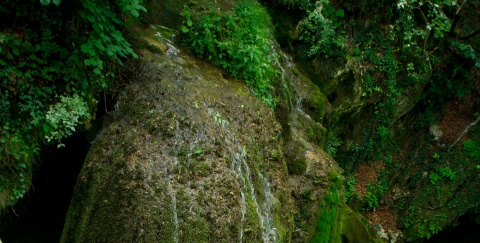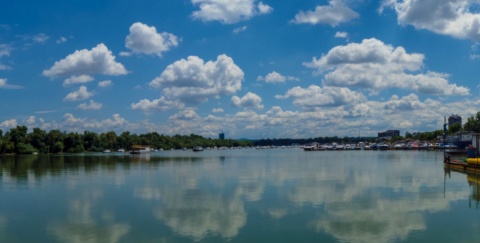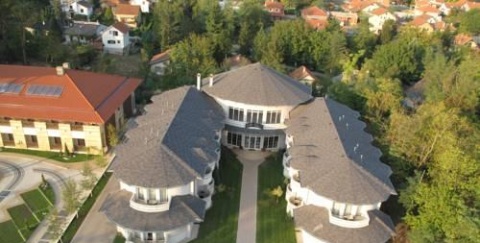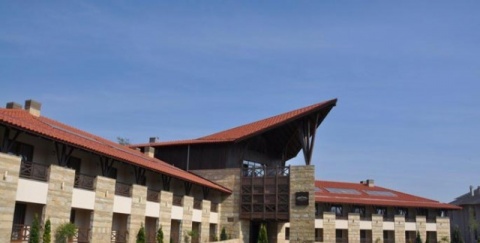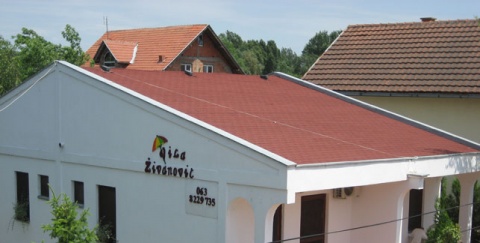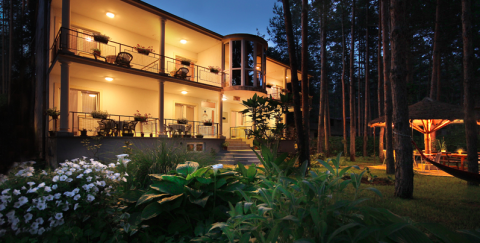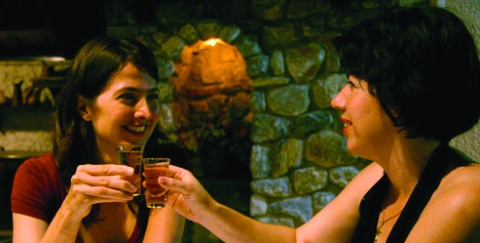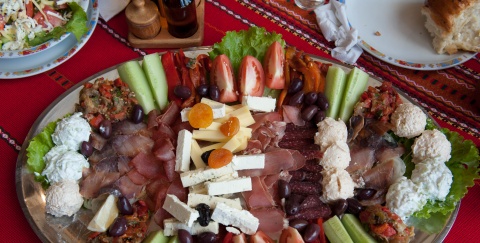
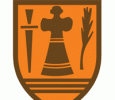
Požarevac
Požarevac is a town in eastern Serbia, located 80 kilometres to the southeast of Belgrade, on a latitude of 44º37’12’’N and a longitude of 21º11’23’’E, lying at the heart of the fertile Stig region, between the three rivers – the Danube, the Velika Morava and the Mlava. According t...
Country: Serbia
The moment that you set foot in Požarevac, you will not fail to be charmed by its magic. Perhaps it is not the most beautiful, most famous, or most important town, but it is certainly the town where people most enjoy themselves. Every part of the town has its own, unique charm.With every step, in each passageway, around each corner, a visitor will encounter a new surprise – a museum, an art gallery, or the remnants of the past in the form of the 19th century buildings into which new life has been breathed.
Town Hall - was built in 1889. According to the accounts of the elderly citizens of Požarevac, the builders of the Town Hall were Italians.The building’s facade, done in the manner of Vienna academicism, is reminiscent of Italian renaissance buildings in terms of its forms and details. Since 1894, a beautifully landscaped park exists in front of the Hall. Today the building is home to the municipal assembly and one of the most beautiful examples of the architecture of the past.
Čačalica hill
If you wish to learn the recent history of Požarevac, to relax and have fun, we recommend that you visit Čačalica, a picnic area with a memorial park. It is situated on the Čačalica hill above the town, 200 meters above sea level. It is covered in thick forest, with lots of greenery and flowers and it contains three springs. The forests contains almost 20.000 trees of over a hundred types. The three monuments on Čačalica make it a memorial park as well.
The ethno-park
Built in 1972 as a part of the Požarevac National Museum, the ethno-park on the nearby Tulba hill exhibits the traditional quality of the architecture of the Braničevo region.The ethno-park consists of three facilities: a two-part house, a four-part house and and a barn for keeping grain. The three facilities represent the core around which the Open Museum is developing.The project of revival of the ethno-park includes the setting up of new facilities in order to show the basic elements of public and industrial construction, as well as the historic and cultural heritage of the Braničevo region.
Požarevac peace treaty
It is worth mentioning that there is a memorial dedicated to the Požarevac peace treaty in the ethno-park and that a tent has also been set up, resembling the one under which the signing of the Požarevac peace treaty took place between June 5th and July 21st 1718.
The Milena Pavlović Barilli Gallery
Located in the house where the great painter was born, this true temple of art gives its visitors the opportunity to observe her paintings and get an insight into the works of this extraordinary woman who used to paint between the two World Wars and was one of the most interesting artistic figures in Europe during that period.
The National Museum
Founded in 1895, it is the second oldest museum in Serbia, right after the National Museum in Belgrade. The museum consists of the Archaeology Department with a lapidarium and impressive monuments to the ancient Roman culture, the Cultural History Museum with the rare medals from the period of the Požarevac peace treaty, the Ethno park on Tulba hill, the Petar Dobrnjac Foundation house and the Legacy of Miodrag Marković.
The works of more than twenty artists comprise the collection of paintings kept at the Legacy of Miodrag Marković. Several exhibits at the Museum are one of their kind: the calamus feather that was used for writing on ancient Roman wax boards, the unique numismatic collection, and the coat of arms of Viminacium, made of marble.
Viminacium
The vicinity of Požarevac acts as a real magnet for archaeologists, especially due to the remains of the ancient Roman city of Viminacium. The large-scale excavations in the recent years have testified to the existence of a rich social life in these areas in Roman times, and some of the events, especially those that occurred in the 4th and 5th century AD, were of considerable importance to the Empire. Jewellery made of precious metals is also supposed to have been produced here and, for a period of time, they used to mint their own money. Coins have been found portraying women (the Roman emperors’ wives). So far, over 50,000 items have been excavated. Among these, there are certain finds of international importance, e.g. the instruments used for eye surgery, an hourglass, a pen made of a bird’s bone called calamus, and a fresco dating from the 4th century AD, discovered on the Pećine site near the Mlava river.
The Cathedral Church
The Cathedral Church of the Holy Archangels Michael and Gavrilo was erected by Prince Miloš Obrenović in 1819.The icons on the iconostasis were painted by Nikola Marković in 1870. The town park
Staying in Požarevac without seeing the park and the famous “Miloš in the park” statue is equivalent to not being in this town at all. For a long time, Požarevac used to be Prince Miloš Obrenović’s second capital city . The monumental statue was erected to him in 1898. The statue was revealed by Aleksandar Obrenović, the king at the time, witnessed by his father, the former king Milan Obrenović. Ljubičevo horse farm One of the oldest horse farms in Serbia, it was founded in 1853 by Prince Miloš Obrenović . Prince Mihailo is the one who gave Ljubičevo its name, in memory of his mother and Prince Miloš’ wife, Princess Ljubica. The horse farm is closely connected to the tourist and sporting event called Ljubičevo Equestrian Games. Ethno festivals and events
In the spirit of maintaining the tradition and preserving old Serbian crafts, sporting events, traditional ways of preparing food and other Serbian customs, ethno festivals and events are organised in Požarevac:
Town Hall - was built in 1889. According to the accounts of the elderly citizens of Požarevac, the builders of the Town Hall were Italians.The building’s facade, done in the manner of Vienna academicism, is reminiscent of Italian renaissance buildings in terms of its forms and details. Since 1894, a beautifully landscaped park exists in front of the Hall. Today the building is home to the municipal assembly and one of the most beautiful examples of the architecture of the past.
Čačalica hill
If you wish to learn the recent history of Požarevac, to relax and have fun, we recommend that you visit Čačalica, a picnic area with a memorial park. It is situated on the Čačalica hill above the town, 200 meters above sea level. It is covered in thick forest, with lots of greenery and flowers and it contains three springs. The forests contains almost 20.000 trees of over a hundred types. The three monuments on Čačalica make it a memorial park as well.
The ethno-park
Built in 1972 as a part of the Požarevac National Museum, the ethno-park on the nearby Tulba hill exhibits the traditional quality of the architecture of the Braničevo region.The ethno-park consists of three facilities: a two-part house, a four-part house and and a barn for keeping grain. The three facilities represent the core around which the Open Museum is developing.The project of revival of the ethno-park includes the setting up of new facilities in order to show the basic elements of public and industrial construction, as well as the historic and cultural heritage of the Braničevo region.
Požarevac peace treaty
It is worth mentioning that there is a memorial dedicated to the Požarevac peace treaty in the ethno-park and that a tent has also been set up, resembling the one under which the signing of the Požarevac peace treaty took place between June 5th and July 21st 1718.
The Milena Pavlović Barilli Gallery
Located in the house where the great painter was born, this true temple of art gives its visitors the opportunity to observe her paintings and get an insight into the works of this extraordinary woman who used to paint between the two World Wars and was one of the most interesting artistic figures in Europe during that period.
The National Museum
Founded in 1895, it is the second oldest museum in Serbia, right after the National Museum in Belgrade. The museum consists of the Archaeology Department with a lapidarium and impressive monuments to the ancient Roman culture, the Cultural History Museum with the rare medals from the period of the Požarevac peace treaty, the Ethno park on Tulba hill, the Petar Dobrnjac Foundation house and the Legacy of Miodrag Marković.
The works of more than twenty artists comprise the collection of paintings kept at the Legacy of Miodrag Marković. Several exhibits at the Museum are one of their kind: the calamus feather that was used for writing on ancient Roman wax boards, the unique numismatic collection, and the coat of arms of Viminacium, made of marble.
Viminacium
The vicinity of Požarevac acts as a real magnet for archaeologists, especially due to the remains of the ancient Roman city of Viminacium. The large-scale excavations in the recent years have testified to the existence of a rich social life in these areas in Roman times, and some of the events, especially those that occurred in the 4th and 5th century AD, were of considerable importance to the Empire. Jewellery made of precious metals is also supposed to have been produced here and, for a period of time, they used to mint their own money. Coins have been found portraying women (the Roman emperors’ wives). So far, over 50,000 items have been excavated. Among these, there are certain finds of international importance, e.g. the instruments used for eye surgery, an hourglass, a pen made of a bird’s bone called calamus, and a fresco dating from the 4th century AD, discovered on the Pećine site near the Mlava river.
The Cathedral Church
The Cathedral Church of the Holy Archangels Michael and Gavrilo was erected by Prince Miloš Obrenović in 1819.The icons on the iconostasis were painted by Nikola Marković in 1870. The town park
Staying in Požarevac without seeing the park and the famous “Miloš in the park” statue is equivalent to not being in this town at all. For a long time, Požarevac used to be Prince Miloš Obrenović’s second capital city . The monumental statue was erected to him in 1898. The statue was revealed by Aleksandar Obrenović, the king at the time, witnessed by his father, the former king Milan Obrenović. Ljubičevo horse farm One of the oldest horse farms in Serbia, it was founded in 1853 by Prince Miloš Obrenović . Prince Mihailo is the one who gave Ljubičevo its name, in memory of his mother and Prince Miloš’ wife, Princess Ljubica. The horse farm is closely connected to the tourist and sporting event called Ljubičevo Equestrian Games. Ethno festivals and events
In the spirit of maintaining the tradition and preserving old Serbian crafts, sporting events, traditional ways of preparing food and other Serbian customs, ethno festivals and events are organised in Požarevac:
- The Easter ethno festival takes place on the second day of Easter in Poljana, that is in Sestroljin monaster. They competed in folklore dancing, preparing traditional meals, old sports disciplines and practising ancient crafts,
- Sestroljin days are also celebrated in Poljana, in Sestroljin monastery, from 17th to 19th August. This event is both cultural and religious in character, being based on the belief in transubstantiation,
- The Ostrovo bećarac is another event that cherishes traditional Serbian customs, the preparation of ethno-food, old crafts and the art of giving a speech when proposing a toast. This event takes place in Ostrovo village on 21st July, which is the Day of St Prokopije the martyr,
- Festival of flowers celebrates the begginingof may,
- International Carnival takes place in late August as a side event of Ljubičevo Equestrian Events,
- Ljubičevo Equestrian Events(since 1964), the first weekend of Setember has been a time when the elite of European equestrian sport and the modern knights in their saddles meet in Požarevac. They mount their pretty horses and start the competition on the Požarevac hippodrome begin, a two-day holiday for the people in Požarevac and all those who love horse riding sports and equestrian skills.
DANUBE.TRAVEL has no control over the website content generated by users and/or visitors, neither such content represents a statement, opinion, recommendation or rating by DANUBE.TRAVEL. For further information please refer to DANUBE.TRAVEL – General Website Terms and Conditions of Use.
Places near this location
Where to stay
Dine and wine
My Danube
Trip Plan
Your Trip Plan is currently empty. Add a city, location or route to create your trip plan.
 EN
EN DE
DE


